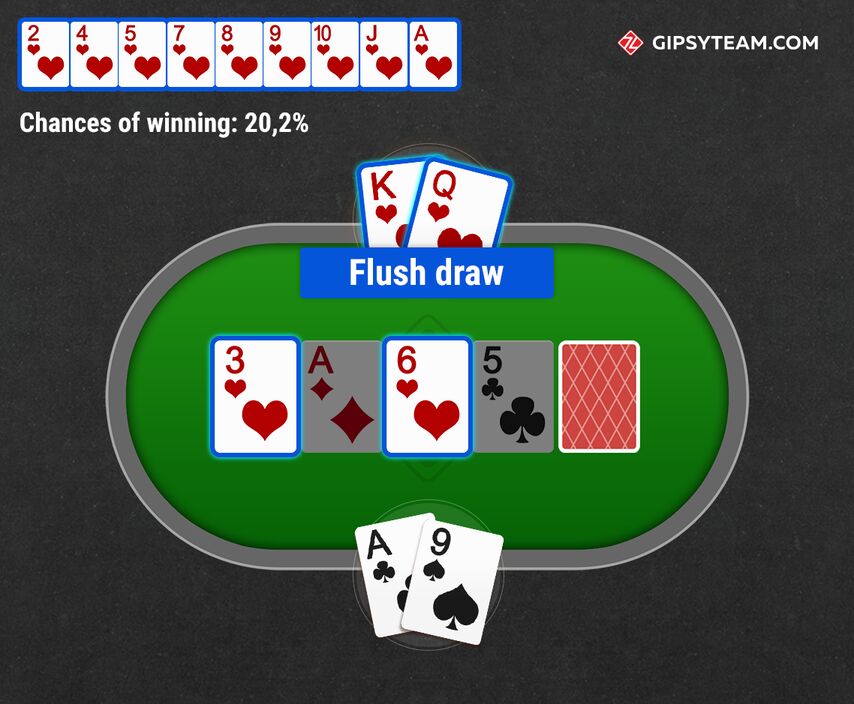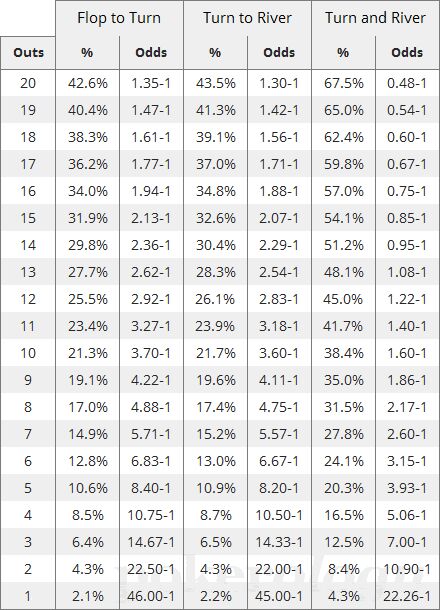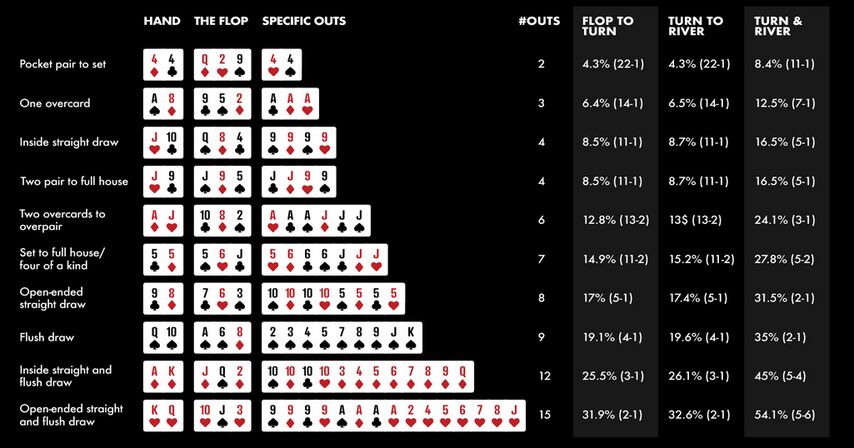The ability to quickly determine how many outs you have to have a winning hand is one of the most fundamental but essential skills for a poker player. What are outs in poker? Outs are cards that can help you improve your hand and lead to a winning combo by the end of the hand. Any card that improves your hand may be regarded as an out, but not all poker outs are equal.
How to Calculate Outs
You can calculate poker outs if you have a basic understanding of mathematics. The more your number of outs, the greater your odds of winning the hand. There is a direct correlation.
Consider a scenario where you have two spades, and the flop shows two additional spades and a diamond. You are now one spade shy of completing a flush. How can we figure out how many outs we have now? It depends on the spot. For instance, you count the deck's remaining cards of the same suit if you're going for a flush. Given that you have two spades in your hand, and two on the board, there are still nine spades in the deck, so you have nine outs to complete your flush.

Likewise, while attempting to complete a straight, you count the number of cards that would complete your sequence. If the flop shows 6-7-Q and you have 8-9, for example, any 5 or 10 would do the job to complete your straight. You have eight outs since the deck has four 5s and four 10s.
Acknowledging poker outs becomes crucial when playing on popular online poker sites like AmericasCardRoom, 888 Poker, and PokerStars. These platforms offer exciting opportunities to use your outs strategically and improve your chances of winning big.
Players can also use poker odds charts when counting outs in poker. These handy tools help you how to calculate outs in poker and the probability of drawing a winning card, assisting players in making informed decisions. By quickly referencing the charts, you can estimate your chances of completing a straight flush or any desired hand.

The Two and Four Rule
The two and four rule effectively allows players to assess their odds of getting their ideal card(s) on the subsequent streets. The rule of is a shortcut for calculating the percentage probability of completing a draw in Hold'em. To determine the likelihood as a percentage:
- Anytime you are on the flop and awaiting the turn, multiply your outs by four.
- When you are on the turn and waiting for the river, multiply your outs by two.
- After multiplying your outs by either 4 or 2, you will get a percentage that you can compare to your pot odds to determine whether calling with a drawing hand is worthwhile. The rule only applies to percentage odds, meaning it does not apply to ratio odds.
Two overcards: 6 outs * 2 = 12%
Flush draw: 9 outs * 2 = 18%
Straight draw: 8 outs * 2 = 16%
Two pair and you need to make a full house: 4 outs * 2 = 8%
Flush draw; the opponent is all in on the flop: 9 outs * 4 = 36%
Straight draw, the opponent is all in on the flop: 8 outs * 4 = 32%
We talked before about betting actions on each street, and how action may vary considering which players have which outs.
Example hand
In a $1/$2 NL Hold'em game, you have a flush draw on the flop. Your opponent places a $100 bet into the $100 pot. The pot is now $200; you must call $100 to see if you can hit your flush. Do you call or fold?
Hand: A♣6♣
Flop: J♣4♣9♣
Pot: $200
To Call: $100
We have nine outs to make a flush draw, and because we are on the flop waiting for the turn, we will apply the "rule of two."
Probability of getting a flush: 9 outs * 2 = 18%
Pot odds: 33% ($300 pot total, including our call. $100 is 33% of $300.)
We should fold since our odds of making our flush are worse than the chances we stand to gain from the pot. We fold because we want to only call up to 18% of the pot size to continue.
A quick visual breakdown of outs for various hands

The most common type of out is a "clean out." It refers to a card that will undoubtedly complete your hand and provide you with the winning combination you seek. For instance, if you have two hearts in your hand and two additional hearts on the flop. Any heart that appears on the turn or river in this scenario will complete your flush. These are clean outs.
The Significance of Understanding Poker Outs
Understanding poker outs is essential for every serious poker player. By calculating your outs, you acquire crucial information that can help you make better decisions throughout the game. Knowing your outs enables you to calculate the strength of your hand and the likelihood that it will improve on the next street. This information lets you make accurate decisions regarding whether to continue betting, fold, or raise your stakes.
You may assess the likelihood of hitting the desired card by analyzing the cards on the table, the number of cards left in the deck, and the combinations that might improve your hand. Understanding outs also allows you to calculate the pot odds. Pot odds relate to the potential upside of winning the hand to the cost of continuing to play.
Now that you know more about poker odds, hit the tables and see if you can do the quick math yourself. The faster you can calculator your outs, the quicker you can make the proper decisions on each street.





















